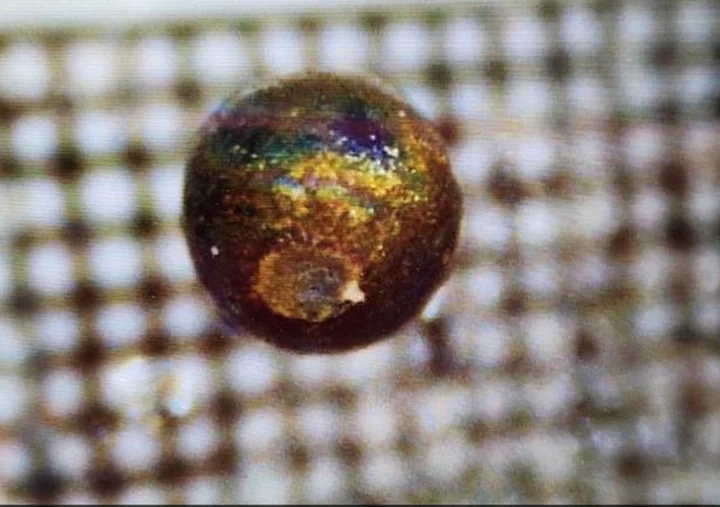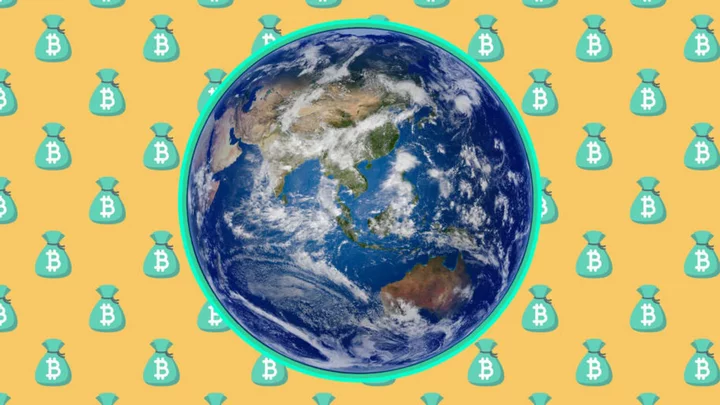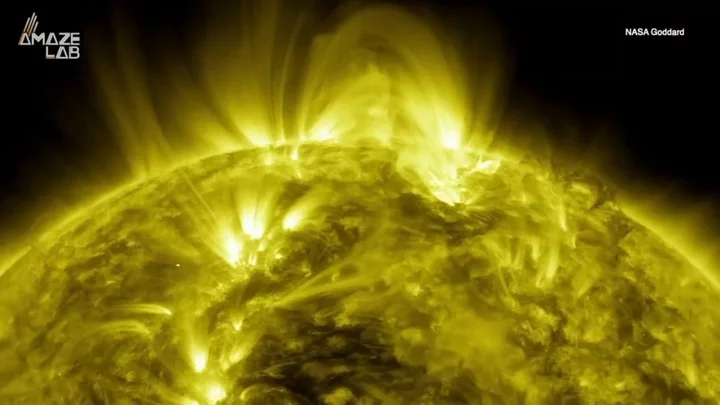Scientists have found materials in the sea from outside Solar System, controversial Harvard professor claims
Scientists have found material from outside of our solar system for the first ever time, according to a controversial Harvard Professor. The “spheres” were found in the Pacific Ocean in June. But early analysis has now indicated that the material came from outside of our solar system, carried by an interstellar object that crashed into the Earth in 2014, according to Avi Loeb, a theoretical astrophysicist at Harvard University. The material could even be of “extraterrestrial technological origin” because of some unusual characteristics of the material, he said. Professor Loeb has previously claimed that the asteroid may have been artificial, such as an alien spacecraft. “This is a historic discovery because it represents the first time that scientists analyze materials from a large object that arrived to Earth from outside the solar system,” Professor Loeb wrote in his announcement. Professor Loeb has made a number of claims about potential extraterrestrial life and visitors from other solar systems. While has made a number of contributions to astrophysics, he is perhaps best known for his suggestions that Oumuamua, the first interstellar object to visit our solar system, could have been an “alien probe”. His regular and often unusual claims have led to some censure from fellow scientists, who say that he is given to sensationalism and is damaging the usual process of discovery. His pronouncements can be attention-grabbing and undermine the usual work of science to check extraordinary claims with extraordinary evidence, they have said. “People are sick of hearing about Avi Loeb’s wild claims,” Steve Desch, an astrophysicist at Arizona State University, told The New York Times in July, when Professor Loeb revealed details of his search. “It’s polluting good science — conflating the good science we do with this ridiculous sensationalism and sucking all the oxygen out of the room.” Professor Loeb made the most recent claims on Medium, where he has been documenting his trip to the Pacific Ocean to collect materials. In recent years he has been taken with a fireball that fell to Earth in 2014 – and has been looking to collect any fragments from it. He has claimed that details about the fireball indicate that it had come from outside of our solar system. Those claims have proven controversial – though they have been accepted for publication in the prestigious Astrophysical Journal, after initially being rejected – because scientists have argued there is not significant enough proof to indicate it really was an interstellar visitor. Nonetheless, in recent months Professor Loeb and his team have been scouring the Pacific Ocean for any fragments from that object, and in June they announced that they had successfully gathered some examples. Those samples have since undergone testing by scientists. Now Professor Loeb says that analysis shows that the materials are “from a meter-size object that originated from outside the solar system”. A number of details about the material indicated that it was of interstellar origin, he said. He pointed particularly to the amount of beryllium, lanthanum and uranium (or BeLaU) in the objects. That set them apart from other samples not found in the path of the object – and also from objects that would normally be expected to have been formed on the Earth, the Moon or Mars, he said. Professor Loeb said he he was confident that more objects would be found like “IM1”, the name he has given to that object he claimed to be an interstellar visitor. He suggested that there could be “a few million such objects reside within the orbit of the Earth around the Sun at any given time” and that “some of them may represent technological space trash from other civilizations”. He also criticised those many scientists who have expressed scepticism about his claims, joking that he was “running away from colleagues who have strong opinions without seeking evidence, and I am running towards a higher intelligence in interstellar space” and saying that he wishes his critics “happiness and prosperity”. Read More We just received the first ever pictures taken near the Moon’s uncharted south pole Rare blue supermoon brightens the night sky this week India set to launch spacecraft to Sun after successful moon landing Rare blue supermoon brightens the night sky this week India set to launch spacecraft to Sun after successful moon landing Japan forced to suspend launch of historic first Moon lander
Scientists have found material from outside of our solar system for the first ever time, according to a controversial Harvard Professor.
The “spheres” were found in the Pacific Ocean in June. But early analysis has now indicated that the material came from outside of our solar system, carried by an interstellar object that crashed into the Earth in 2014, according to Avi Loeb, a theoretical astrophysicist at Harvard University.
The material could even be of “extraterrestrial technological origin” because of some unusual characteristics of the material, he said. Professor Loeb has previously claimed that the asteroid may have been artificial, such as an alien spacecraft.
“This is a historic discovery because it represents the first time that scientists analyze materials from a large object that arrived to Earth from outside the solar system,” Professor Loeb wrote in his announcement.
Professor Loeb has made a number of claims about potential extraterrestrial life and visitors from other solar systems. While has made a number of contributions to astrophysics, he is perhaps best known for his suggestions that Oumuamua, the first interstellar object to visit our solar system, could have been an “alien probe”.
His regular and often unusual claims have led to some censure from fellow scientists, who say that he is given to sensationalism and is damaging the usual process of discovery. His pronouncements can be attention-grabbing and undermine the usual work of science to check extraordinary claims with extraordinary evidence, they have said.
“People are sick of hearing about Avi Loeb’s wild claims,” Steve Desch, an astrophysicist at Arizona State University, told The New York Times in July, when Professor Loeb revealed details of his search. “It’s polluting good science — conflating the good science we do with this ridiculous sensationalism and sucking all the oxygen out of the room.”
Professor Loeb made the most recent claims on Medium, where he has been documenting his trip to the Pacific Ocean to collect materials. In recent years he has been taken with a fireball that fell to Earth in 2014 – and has been looking to collect any fragments from it.
He has claimed that details about the fireball indicate that it had come from outside of our solar system. Those claims have proven controversial – though they have been accepted for publication in the prestigious Astrophysical Journal, after initially being rejected – because scientists have argued there is not significant enough proof to indicate it really was an interstellar visitor.
Nonetheless, in recent months Professor Loeb and his team have been scouring the Pacific Ocean for any fragments from that object, and in June they announced that they had successfully gathered some examples. Those samples have since undergone testing by scientists.
Now Professor Loeb says that analysis shows that the materials are “from a meter-size object that originated from outside the solar system”. A number of details about the material indicated that it was of interstellar origin, he said.
He pointed particularly to the amount of beryllium, lanthanum and uranium (or BeLaU) in the objects. That set them apart from other samples not found in the path of the object – and also from objects that would normally be expected to have been formed on the Earth, the Moon or Mars, he said.
Professor Loeb said he he was confident that more objects would be found like “IM1”, the name he has given to that object he claimed to be an interstellar visitor. He suggested that there could be “a few million such objects reside within the orbit of the Earth around the Sun at any given time” and that “some of them may represent technological space trash from other civilizations”.
He also criticised those many scientists who have expressed scepticism about his claims, joking that he was “running away from colleagues who have strong opinions without seeking evidence, and I am running towards a higher intelligence in interstellar space” and saying that he wishes his critics “happiness and prosperity”.
Read More
We just received the first ever pictures taken near the Moon’s uncharted south pole
Rare blue supermoon brightens the night sky this week
India set to launch spacecraft to Sun after successful moon landing
Rare blue supermoon brightens the night sky this week
India set to launch spacecraft to Sun after successful moon landing
Japan forced to suspend launch of historic first Moon lander









